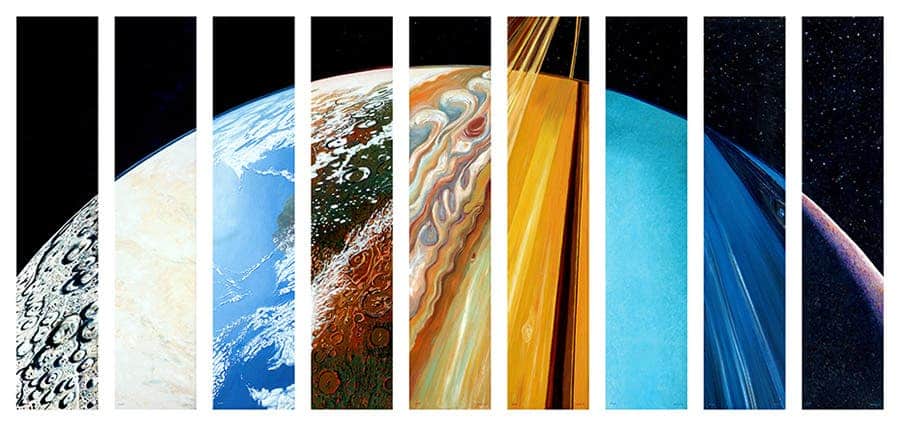
(Collection of Merrimack College)
This magnificent painting by Steve Gildea combines the planets of our solar system in one beautiful planetary mosaic. It’s a celebration of the geological diversity our solar system possess, illustrating each planet’s surface in the order they orbit the sun, starting from the battered Mercury to lonely Pluto. Speaking of which, Pluto is of course no longer classed as a planet – it’s technically a dwarf planet, but Gildea couldn’t have known this in 1990 when he first revealed the piece.
Of course, the painting was made to hold each planet in proportion. The image below shows how each planet differs in size from one another.

- Jupiter (69,911 km / 43,441 miles) – 1,120% the size of Earth
- Saturn (58,232 km / 36,184 miles) – 945% the size of Earth
- Uranus (25,362 km / 15,759 miles) – 400% the size of Earth
- Neptune (24,622 km / 15,299 miles) – 388% the size of Earth
- Earth (6,371 km / 3,959 miles)
- Venus (6,052 km / 3,761 miles) – 95% the size of Earth
- Mars (3,390 km / 2,460 miles) – 53% the size of Earth
- Mercury (2,440 km / 1,516 miles) – 38% the size of Earth






